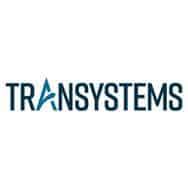In this episode, I talk with Andrew Ceifetz, P.E., RSP2I, vice president and national director for transportation safety at WSP USA, about Vision Zero and its bold mission to make roads safer for everyone. From redesigning roadways to reducing speed limits, discover how these strategies are transforming communities and saving lives.
***The video version of this episode can be viewed here.***
Engineering Quotes:
Here Are Some of the Questions I Asked Andrew:
- What does transportation safety involve, and how would you explain it simply?
- What is Vision Zero, and what is its main goal in transportation safety?
- How is Vision Zero different from traditional traffic safety approaches, and are there similar initiatives with the same goals?
- What challenges do engineers face when applying Vision Zero principles to existing roads and infrastructure?
- How can engineers balance safety improvements with other project goals like cost efficiency and traffic flow?
- Why is collaboration important in transportation safety, and how do you approach working with different stakeholders?
- How does Vision Zero work at a local or state level, and how do agencies turn this global initiative into action on the ground?
- What final piece of advice would you give to civil engineers starting out in transportation safety?
Here Are Some Key Points Discussed in This Episode About Unlocking the Magic of Vision Zero With Safer Roads for a Better World:
- Transportation safety includes planning, designing, and operating systems to reduce crashes and enhance safety for all road users. It integrates practices such as transit, maintenance, and intelligent transportation systems to improve how people move and interact on roads.
- Vision Zero is a global initiative with the goal of eliminating traffic fatalities and serious injuries. It focuses on creating safer and healthier mobility for everyone through strategic action and collaboration.
- Vision Zero shifts the focus from reducing crash numbers to preventing fatalities and serious injuries. Similar initiatives, such as the Safe System approach, emphasize safer people, vehicles, speeds, and road designs to create comprehensive safety solutions.
- Engineers encounter challenges such as limited space, competing priorities, and balancing road capacity with safety enhancements. Solutions like adding bike lanes or narrowing traffic lanes require careful consideration to ensure overall improvements without creating new issues.
- Safety takes precedence over cost savings and time efficiencies, as protecting lives is the ultimate priority. Engineers use tools and models to predict safety and operational outcomes, ensuring project goals are met without compromising human safety.
- Collaboration is essential because engineers, policymakers, and communities bring diverse perspectives to safety projects. By aligning priorities and addressing shared goals, stakeholders contribute to creating roadways that are safer and more functional for everyone.
- Vision Zero operates locally through tailored safety plans, such as state highway safety strategies or city-level commitments to its principles. Success stories, like Hoboken, New Jersey, highlight how focused efforts and innovative strategies eliminate fatalities and improve road safety.
- Civil engineers should embrace creativity and innovation, moving beyond traditional methods to prioritize safety. By exploring new ideas and approaches, they have the opportunity to make meaningful contributions to saving lives and improving transportation systems.
More Details in This Episode…
About Andrew Ceifetz, P.E., RSP2I

His work has been presented at conferences in Michigan, Ohio, Wisconsin, Canada, and New Zealand, and he has been published in both United States and Canadian research journals. Andrew serves as co-chair of the Traffic Safety Engineering Action Team for Michigan’s Governor’s Traffic Safety Advisory Commission. Andrew developed the Highway Safety Manual spreadsheet tool used by the Michigan DOT and has developed and led training for Road Safety Audits, the Highway Safety Manual, Performance Based Maintenance, and safety reviews for hundreds of MDOT and Local Agency Staff.
As WSP’s director for transportation safety, he serves as a focal point for WSP’s national practice in highway safety, providing technical leadership and support at the national-scale in research, development, implementation, and training of highway safety-related policies, planning, data-driven analyses, safety management systems, safety performance management, and other emerging issues.
Sources/References:
WSP USA
Vision Zero
ITS
USDOT
National Roadway Safety Strategy
Connect with Andrew Ceifetz, P.E., RSP2I., on LinkedIn
We would love to hear any questions you might have or stories you can share on unlocking the magic of Vision Zero with safer roads for a better world.
Please leave your comments, feedback, or questions in the section below.














